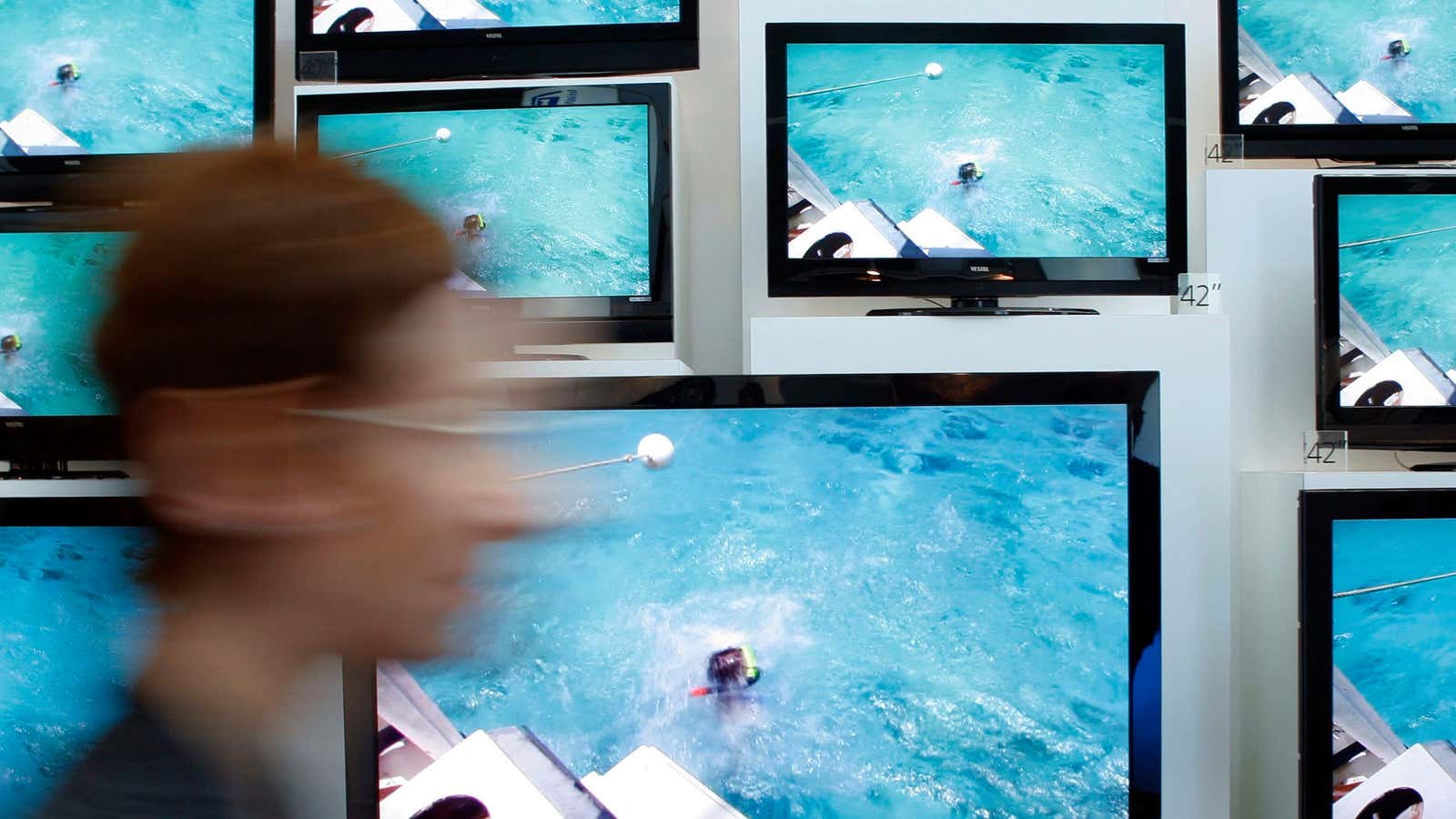If a commercial airs on TV and no one is around to watch it, does it still make a sound? Yes. And an advertiser has still spent a lot of money—sometimes millions of dollars—for the ad not to be heard.
Too often, when a TV commercial airs, there is no one in the room to watch it, finds a new study by IPG Media Lab, a research arm of the Interpublic agency network. On average, 29% of traditional TV commercials in the US air when no one is in the room, based on six months of TV-viewing data analyzed by IPG Media Lab and collected by TVision, a firm that measures how people watch TV. A person had to be in the room for two or more seconds while the ad was on-screen to count as present.
The report raises the question of whether TV ads have some of the same pitfalls as digital ads. “Viewability,” an advertising metric that tracks only the impressions users see, has been a conversation in the online advertising space for the past few years now, as part of a shift to let advertisers pay only for the impressions that users could possibly view. That would exclude, for instance, ads that were loaded at the bottom of a page when users didn’t scroll down far enough to see them. Roughly 32% of digital video ads tracked in North America during the fourth quarter of 2018 were not viewable, found Extreme Reach, a tech platform that serves video ad campaigns. It used the industry standard for viewability, in which at least 50% of the ad must be in view for at least two seconds. The IPG study suggests that TV ads aren’t too different.
The data in the IPG report were compiled from a TVision panel of more than 5,300 people in the top 20 TV markets (pdf) in the US during the second half of 2018. The panelists installed computer-vision technology on their TV sets that could detect what was being watched, whether people were in the room to watch it, and whether the viewers were actively looking at the TV set. The study was limited to those who watched live, scheduled programming in the first three days of its airing. Overall, TVision tracked nearly 3 million unique ads that aired nearly 6 million times during the six-month period.
The length of the TV commercial, time of day it airs, and placement in the programming can also affect how viewable an ad is, the IPG report suggests. It encourages advertisers to use new measurement techniques and be more strategic about where and when to air TV ads, in order to increase the odds of the ads being seen by the right audience.
